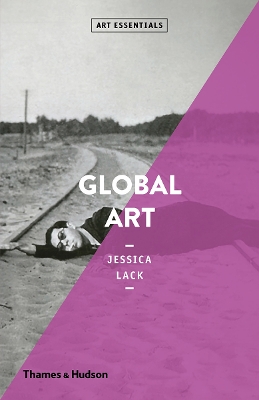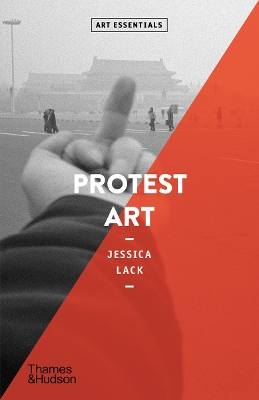Art Essentials
2 total works
Jessica Lack introduces fifty pioneering modern and contemporary art movements born out of political engagement, decolonization, marginalization or conflict. These movements have aimed to revitalize society by challenging the status quo. While not as well known as Pop Art, Dada and Futurism, these associations of artists – such as the Saqqakhaneh artists of Iran, the Stridentists of Mexico, Jikken Kobo of Japan or America’s AfriCobra – have empowered and given voice to their members.
Global Art brings unfamiliar material to life by exploring the unique historical context for each art movement, key cultural events and interconnections, and the key protagonists in the movement’s evolution.
Global Art brings unfamiliar material to life by exploring the unique historical context for each art movement, key cultural events and interconnections, and the key protagonists in the movement’s evolution.
An essential guide to how the power of art has been harnessed to effect political change across the modern world, from the struggle for universal suffrage to Black Lives Matter.
Here is a well-researched, concise guide to protest art, exploring what happens when artists join forces with radical political movements to foster change. The works and movements discussed emerged at times of great upheaval, war, colonialism, independence and changes of government, and reveal how art and politics have been intertwined throughout the 20th and early 21st centuries.
Jessica Lack adopts an inclusive and international approach, presenting examples from nations and societies around the globe, including: Sylvia Pankhurst’s paintings depicting the harsh realities faced by women manual workers in early 1900s Britain; the revolutionary aesthetic created by Emory Douglas for the Black Panthers in the 1960s, which documented and galvanized the campaign for the rights of Black Americans; Nandalal Bose’s portrait of Mahatma Gandhi, which became the iconic symbol of the Indian non-violence movement in the 1930s; and the Chilean direct action work that contributed to the collapse of General Pinochet’s government.
Each of the nine chapters addresses different ways in which art has been used to effect political transformation, taking in humour and satire, performance and propaganda, art's relationships to institutions, the media, conflict and the state, and its uses as a weapon, a galvanizing force and a way of refusing the status quo. Artistic acts, collectives and movements are examined in their context, revealing how they have influenced other artists and changed the wider political and artistic world.
Here is a well-researched, concise guide to protest art, exploring what happens when artists join forces with radical political movements to foster change. The works and movements discussed emerged at times of great upheaval, war, colonialism, independence and changes of government, and reveal how art and politics have been intertwined throughout the 20th and early 21st centuries.
Jessica Lack adopts an inclusive and international approach, presenting examples from nations and societies around the globe, including: Sylvia Pankhurst’s paintings depicting the harsh realities faced by women manual workers in early 1900s Britain; the revolutionary aesthetic created by Emory Douglas for the Black Panthers in the 1960s, which documented and galvanized the campaign for the rights of Black Americans; Nandalal Bose’s portrait of Mahatma Gandhi, which became the iconic symbol of the Indian non-violence movement in the 1930s; and the Chilean direct action work that contributed to the collapse of General Pinochet’s government.
Each of the nine chapters addresses different ways in which art has been used to effect political transformation, taking in humour and satire, performance and propaganda, art's relationships to institutions, the media, conflict and the state, and its uses as a weapon, a galvanizing force and a way of refusing the status quo. Artistic acts, collectives and movements are examined in their context, revealing how they have influenced other artists and changed the wider political and artistic world.

